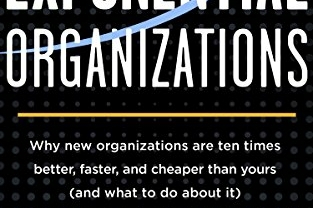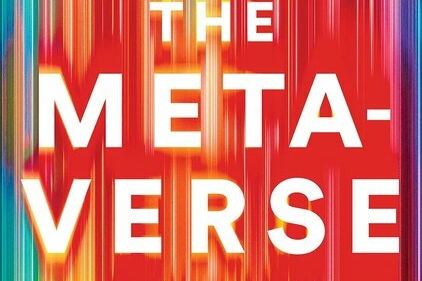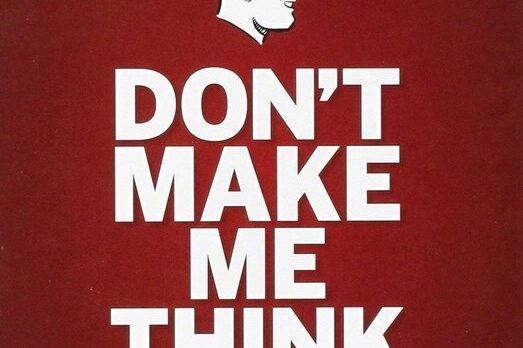In Fourth Industrial Revolution, Founder and Executive Chairman of the World Economic Forum, Professor Klaus Schwab argues that technology and digitization will revolutionize everything. Simply put, major technological innovations are on the brink of fueling momentous change throughout the world—inevitably so. A primer on the fourth industrial revolution—what it is, what it will bring, how it will impact us, and what can be done to harness it for the common good.
“The question for all industries and companies, without exception, is no longer “Am I going to be disrupted?” but “When is disruption coming, what form will it take and how will it affect me and my organization?”
By enabling “smart factories,” the fourth industrial revolution creates a world in which virtual and physical systems of manufacturing globally cooperate with each other in a flexible way. This enables the absolute customization of products and the creation of new operating models.
In the coming decades, the technologies driving the fourth industrial revolution will fundamentally transform the entire structure of the world economy, our communities and our human identities. These profound changes highlight the great responsibilities we face as a civilization. We have to make choices and contribute as citizens, government officials and business leaders to design systems that ensure benefits and risks are carefully weighed and new systems arise with common values and clear purposes in mind that benefit everyone on our planet.
Paradigm Shift
We are witnessing profound shifts across all industries, marked by the emergence of new business models, the disruption1 of incumbents and the reshaping of production, consumption, transportation and delivery systems. On the societal front, a paradigm shift is underway in how we work and communicate, as well as how we express, inform and entertain ourselves.
The Insight on why the fourth Industrial Revolution is distinct:
Velocity:
Contrary to the previous industrial revolutions, this one is evolving at an exponential rather than linear pace. This is the result of the multifaceted, deeply interconnected world we live in and the fact that new technology begets newer and ever more capable technology.
Breadth and Depth:
It builds on the digital revolution and combines multiple technologies that are leading to unprecedented paradigm shifts in the economy, business, society, and individually. It is not only changing the “what” and the “how” of doing things but also “who” we are.
Systems Impact:
It involves the transformation of entire systems, across (and within) countries, companies, industries and society as a whole.
The Fourth Industrial Revolution: Historical Context
The Agrarian Revolution
The agrarian revolution combined the efforts of animals with those of humans for the purpose of production, transportation and communication. Little by little, food production improved, spurring population growth and enabling larger human settlements. This eventually led to urbanization and the rise of cities.”
The agrarian revolution was followed by a series of industrial revolutions that began in the second half of the 18th century. These marked the transition from muscle power to mechanical power, evolving to where today, with the fourth industrial revolution, enhanced cognitive power is augmenting human production.
The Industrial revolutions
- The first industrial revolution spanned from about 1760 to around 1840. Triggered by the construction of railroads and the invention of the steam engine, it ushered in mechanical production.
- The second industrial revolution, which started in the late 19th century and into the early 20th century, made mass production possible, fostered by the advent of electricity and the assembly line.
- The third industrial revolution began in the 1960s. It is usually called the computer or digital revolution because it was catalyzed by the development of semiconductors, mainframe computing (1960s), personal computing (1970s and ’80s) and the internet (1990s).
- The fourth industrial revolution began at the turn of this century and builds on the digital revolution. It is characterized by a much more ubiquitous and mobile internet, by smaller and more powerful sensors that have become cheaper, and by artificial intelligence and machine learning.
The second industrial revolution has yet to be fully experienced by 17% of world, as nearly 1.3 billion people still lack access to electricity.
This is also true for the third industrial revolution, with more than half of the world’s population, 4 billion people, most of whom live in the developing world, lacking internet access.
Ambient Computing
Today, voice recognition and artificial intelligence are progressing so quickly that talking to computers will soon become the norm, creating what some technologists call ambient computing, in which robotic personal assistants are constantly available to take notes and respond to user queries. Our devices will become an increasing part of our personal ecosystem, listening to us, anticipating our needs, and helping us when required —even if not asked.
A simple device such as a tablet, which we use for reading, browsing and communicating, possesses the equivalent processing power of 5,000 desktop computers from 30 years ago, while the cost of storing information is approaching zero (storing 1GB costs an average of less than $0.03 a year today, compared with more than $10,000, 20 years ago).
Platform Effects
The concentration of benefits and value in just a small percentage of people is also exacerbated by the so-called platform effect, in which digitally driven organizations create networks that match buyers and sellers of a wide variety of products and services and thereby enjoy increasing returns to scale. The consequence of the platform effect is a concentration of few but powerful platforms that dominate their markets.
Megatrends
All new developments and technologies have one key feature in common: they leverage the pervasive power of digitization and information technology.
The three clusters: physical, digital and biological.
All three are deeply interrelated and the various technologies benefit from one another based on the discoveries and progress each makes.
Physical
There are four main physical manifestations of the technological megatrends, which are the easiest to see because of their tangible nature:
— autonomous vehicles
— 3D printing
— advanced robotics
— new materials
“When the next generation of robots emerges, they will likely reflect an increasing emphasis on human– machine collaboration.”
Digital
One of the main bridges between the physical and digital applications enabled by the fourth industrial revolution is the internet of things (IoT)—sometimes called the “internet of all things”.
Digital platforms have dramatically reduced the transaction and friction costs incurred when individuals or organizations share the use of an asset or provide a service. Each transaction can now be divided into very fine increments, with economic gains for all parties involved. In addition, when using digital platforms, the marginal cost of producing each additional product, good or service tends toward zero.
Biological
Innovations in the biological realm—and genetics in particular—are nothing less than breathtaking. In recent years, considerable progress has been achieved in reducing the cost and increasing the ease of genetic sequencing and, lately, in activating or editing genes. It took more than 10 years, at a cost of $2.7 billion, to complete the Human Genome Project. Today, a genome can be sequenced in a few hours and for less than a thousand dollars.
Secular Stagnation
Secular stagnation” describes a situation of persistent shortfalls of demand, which cannot be overcome even with near-zero interest rates. Although this idea is disputed among academics, it has momentous implications. If true, it suggests that global GDP growth could decline even further. We can imagine an extreme scenario in which annual global GDP growth falls to 2%, which would mean that it would take 36 years for global GDP to double.
Aging
The world’s population is forecast to expand from 7.2 billion today to 8 billion by 2030 and 9 billion by 2050.
The fourth industrial revolution provides us with the ability to live longer, healthier and more active lives. As we live in a society where more than a quarter of the children born today in advanced economies are expected to live to 100, we will have to rethink issues such the working age population, retirement and individual life-planning.
The Four Major impacts
The fourth industrial revolution has four main effects on business across industries:
— customer expectations are shifting
— products are being enhanced by data, which improves asset productivity
— new partnerships are being formed as companies learn the importance of new forms of collaboration, and
— operating models are being transformed into new digital models.
Need help with developing a digital strategy for your business? Get in touch.


